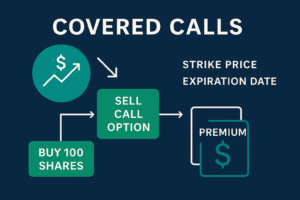1) The “sunset phase” isn’t decline—it’s design space
Every blockbuster ages. Exclusivity erodes, payer leverage grows, and the classic lifecycle playbook (new indications, dose forms, co‑pays) delivers diminishing returns. That maturity moment is precisely when incentives shift: with R&D long sunk and safety well characterized, commercial strategy can move from maximizing rebate economics to testing new channels, price architectures, and service models. The policy context helps: regulators are scrutinizing pharmacy benefit managers (PBMs), whose opaque rebate structures have contributed to higher list prices and patient friction, creating space for manufacturers to try more transparent approaches. The FTC’s 2024 and 2025 PBM reports capture this shift in tone and spotlight the role of intermediaries in patient access and affordability. Federal Trade Commission+1
2) Repatha’s maturity moment
Timeline. Amgen’s PCSK9 inhibitor Repatha (evolocumab) won FDA approval in August 2015, pioneering potent LDL‑C lowering for patients who needed more than statins alone. In 2018, amid coverage hurdles and high out‑of‑pocket costs, Amgen introduced a lower list price option, cutting the annual WAC from roughly $14,100 to $5,850 to improve affordability—especially for Medicare beneficiaries. Amgen+1
Patent runway. Contrary to the casual belief that Repatha’s U.S. protection extends into the mid‑2030s, Amgen’s most recent Form 10‑K lists U.S. antibody claims expiring in 2028 and a U.S. method‑of‑treatment patent expiring in 2030 (select EU claims extend into 2032–2033). The 2023 Supreme Court decision in Amgen v. Sanofi also invalidated certain broad antibody “genus” claims, underscoring the fragility of long‑dated IP for platform biologics. SEC+1
Market reality. Clinically, Repatha now boasts outcomes evidence beyond secondary prevention: Amgen’s VESALIUS‑CV trial reported that adding evolocumab to standard therapy significantly reduced major adverse cardiovascular events even in high‑risk patients without prior heart attack or stroke—top‑line results disclosed in October 2025. Commercially, however, uptake has long been constrained by prior authorization (PA) and step‑therapy requirements, which historically blanketed most plans and discouraged initiation and persistence. Amgen+1
3) The D2C pivot: why now—and why it matters
The move. In October 2025, Amgen launched AmgenNow, a direct‑to‑patient program that offers Repatha for $239 per month—nearly 60% below the current U.S. list price—available to uninsured, cash‑pay, and government program beneficiaries. In parallel, GoodRx announced the same $239 cash price across 70,000+ participating pharmacies nationwide. The program bypasses PA and step‑therapy checks for those using the cash‑pay route. Amgen+1
The rationale.
- Insurance friction is high. Early PCSK9 experience was defined by administrative burden: >80% of patients were in plans requiring PA, and multi‑month reauthorizations were common. Direct cash pricing removes that delay and uncertainty for eligible patients who choose the program. AHA Journals
- Consumers are more price‑literate. Over the last few years, GoodRx and Mark Cuban’s Cost Plus Drugs normalized transparent, cash‑pay comparisons at the counter. Amgen’s move plugs into that consumer behavior rather than fighting it. GoodRx+1
- Gross‑to‑net pressure is structural. Academic work has shown a positive correlation between rebate levels and list prices; in other words, rebate‑driven competition can inflate the “sticker” price patients often pay against. A direct cash offer shrinks that wedge for those who opt in, while testing price elasticity in the wild. USC Schaeffer
Margin math (directionally). Repatha’s WAC equates to roughly $573/month as of 2025; a $239 D2C price likely approximates a payer‑negotiated net in some segments—but with fewer rebate and distribution deductions. The exact economics are proprietary, but the direction is clear: removing intermediaries can trade lower price for higher predictability and simpler patient access. (This is an inference based on public list‑price data and rebate literature—not a disclosure of Amgen’s COGS or contracting.) Fierce Pharma+1

🧠 Let’s Rethink Access Models
Managed-care innovation is moving fast. If you’d like a short briefing or ideation session on D2C and late-stage pricing trends, click below — your email will open pre-filled with quick prompts.
✉️ Send Inquiry4) Repatha as a “last harvest” platform—not just a price cut
Brand goodwill. Delivering a materially lower cash price near the asset’s late life creates consumer goodwill—and defuses criticism that manufacturers preserve high list prices solely to defend rebate‑era economics. It reframes late‑stage pricing as consumer‑first rather than rebate‑first—a timely message amid ongoing PBM scrutiny. Federal Trade Commission
Data capture and learning. A direct channel yields real‑time insights on conversion, adherence, and price sensitivity. For PCSK9 inhibitors—where real‑world persistence can lag trial conditions—those data are strategic assets, informing service design (reminders, coaching) and future label or channel strategies. Evidence on real‑world adherence is mixed across settings, making first‑party data even more valuable. PMC+1
Future readiness. The infrastructure for AmgenNow is reusable. As more manufacturers experiment with D2C (Eli Lilly’s LillyDirect, for example, launched in 2024 with home delivery for select therapies), incumbents are building logistics, pharmacy partnerships, and digital journeys they can redeploy across portfolios—biosimilars, cardiometabolic launches, and beyond. PR Newswire
5) Competitive context: parity pushes channel innovation
Repatha isn’t alone in the LDL‑C world. Sanofi/Regeneron’s Praluent (alirocumab) arrived first in 2015; Novartis’ inclisiran (Leqvio)—with its twice‑yearly maintenance dosing—took U.S. approval in 2021 and has since seen label expansions in 2025. With multiple clinically validated ways to drive LDL‑C lower, differentiation shifts from molecule to model: cost clarity, convenience, and patient experience become primary levers. Regeneron Investor Relations+2Novartis+2
That’s especially true as outcomes evidence broadens. VESALIUS‑CV positions evolocumab squarely in higher‑risk primary prevention—expanding the addressable population at precisely the moment Amgen can simplify access with a cash‑pay option. Demand friction down, eligible population up is a compelling late‑stage mix. Amgen
6) Implications beyond one product
For payers. Cash‑pay D2C doesn’t displace insurance, but it arbitrages the rebate era. When list‑to‑net spreads are large, transparent net cash pricing becomes a credible competitor to formulary‑restricted coverage for some patients. Expect payers to respond with preferred‑pharmacy partnerships, outcomes‑based addenda, or selective cash‑price matching to keep members in‑network. USC Schaeffer
For regulators. Manufacturer‑operated channels raise new questions: What disclosures should accompany D2C pricing claims? How should patient‑reported outcomes and adherence data captured via manufacturer platforms be governed? With the FTC intensifying oversight of pharmacy middlemen, it would be unsurprising to see parallel attention on manufacturer‑pharmacy integration as D2C scales. Federal Trade Commission
For competitors. D2C is no longer “just for startups.” When a top‑10 pharma pivots a flagship asset to a widely advertised cash price, it resets expectations for late‑stage lifecycle management. Expect fast followers—especially where (1) adherence is sensitive to friction, (2) gross‑to‑net gaps are wide, and (3) the safety profile is mature.
7) Risks and watch‑outs
Cannibalization vs. expansion. Will a $239 price siphon insured patients away from covered claims or mostly bring in those blocked by PA, deductibles, or specialist requirements? Monitoring payer mix and net revenue per patient month will determine whether this is a volume‑for‑price trade or true growth.
Operational complexity. Running a D2C channel requires last‑mile orchestration (fulfillment, temperature control, returns, patient support). The model is stickiest when coupled with service layers that raise persistence—text prompts, nurse support, coprescribed labs—because real‑world adherence remains the limiting reagent for population‑level LDL‑C reduction. PMC
Policy drift. A friendlier regulatory posture toward D2C can change—especially if stakeholders argue that manufacturers are disadvantaging small pharmacies or creating parallel markets. As PBM reform proceeds, the relative appeal of D2C vs. traditional contracting could shift. Federal Trade Commission
8) A practical playbook for late‑stage assets
-
- Audit gross‑to‑net mechanics. Identify classes with outsized rebate leakage and high PA burden; those are prime for cash‑price tests. Use a handful of price points to map elasticity and conversion. USC Schaeffer
-
- Build service into the price. Persistence drives outcomes (and economics). Wrap D2C pricing with adherence nudges, lab scheduling, and on‑demand education to capture real‑world value. PMC
-
- Choose complementary retail partners. GoodRx’s role in bringing Repatha’s $239 cash price to tens of thousands of pharmacies shows how D2C and retail can coexist. Hospital and IDN pharmacies could be next for complex biologics. GoodRx Investors
-
- Modulate the message. Late‑stage affordability isn’t charity; it’s a strategic re‑pricing that better aligns perceived value with patient experience—especially as outcomes data widen the eligible base. Amgen
9) Closing reflection
“When an asset reaches full remuneration, innovation shifts from molecule to model.”
Repatha’s direct‑to‑patient offer is not a liquidation sale; it’s a laboratory. On one axis sits new clinical relevance (VESALIUS‑CV’s primary‑prevention win). On the other sits a simpler, lower cash price that sidesteps the friction of rebate‑era access. Together, they re‑position a late‑stage biologic as a platform for learning: real‑world adherence, demand at transparent price points, and operational muscle for future launches. In that sense, D2C becomes a lifecycle extension strategy—not by tinkering with formulations, but by remaking the route to the patient.
Takeaway: Late‑stage assets aren’t a drag; they’re sandboxes for channel reinvention. If Repatha is the prototype, expect the sunset phase to look less like dusk and more like a different kind of daylight—clearer prices, cleaner access, and a tighter link between value created and value captured. Amgen+1








